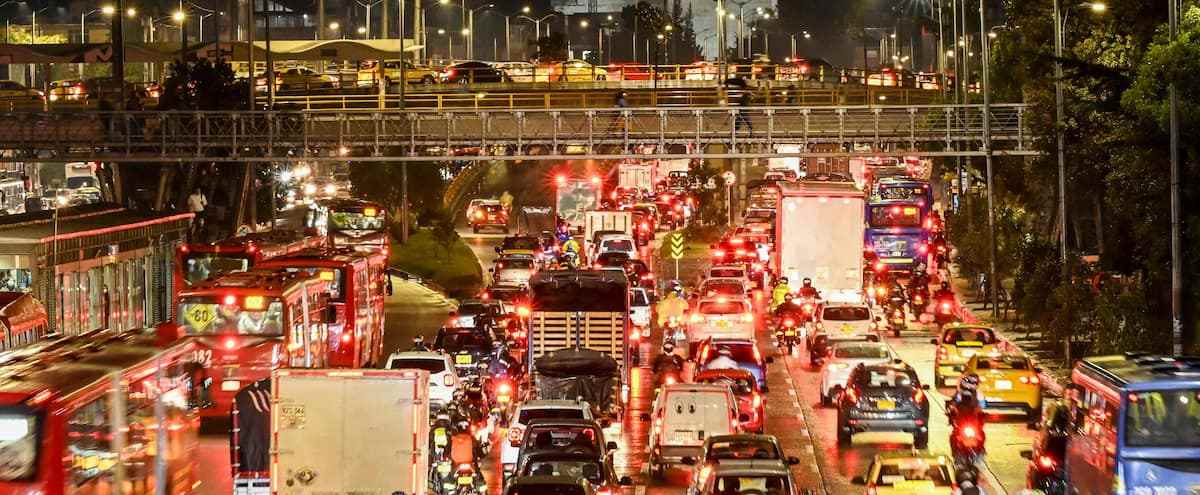One of the most congested cities in the world implemented a system more than 20 years ago that prevents motorists from taking the road every other day, Monday to Friday. Should Montreal imitate Bogotá?
• Read also – Louis-Hippolyte-La Fontaine tunnel: Quebec has no idea of the costs of congestion
“Currently in Bogotá, the traffic is very heavy. But without [la circulation alternée], that would be much worse!” insists José Stalin Rojas, director of the Mobility and Logistics Observatory at the Universidad Nacional de Colombia (National University of Colombia).
Because in the Colombian capital, which is struggling with hellish traffic, it is forbidden to drive your car on even days if your license plate ends in an odd number, and vice versa, between 6 a.m. and 9 p.m. week.
This policy, which bears the name of pico y placed (peak hour and plate), has been in effect since 1998 (with minor changes).
Promising beginnings
“In its early days, it was a measure that had its uses in reducing traffic jams. Unfortunately, it has lost a lot of efficiency so many people have bought new cars since, ”underlines the transport expert.
As a result, Bogotá, with its 7 million inhabitants, was still considered the fourth most congested city in the world in 2021 (Montréal was at 141e rank).
The average speed in its streets is around 22 km/h.
But the situation is much worse on weekends, when pico y placed Not Applicable. “Our road system is collapsing because there are so many cars”, describes José Stalin Rojas.
The pandemic and the deterioration of the public transport system are among the reasons why Bogotanese still prefer to have their own vehicle, according to him.
A means of financing
Two years ago, however, the City began selling a license that authorizes driving at all times, in order to finance its public transport system.
Between January and last May, $21 million was thus collected to make up for its large operating deficit.
“I would tend not to recommend implanting pico y placed to solve the congestion, but to do it rather to collect funds”, affirms José Stalin Rojas, while recalling that an efficient, affordable and safe transit system is essential if we want to reduce traffic on the roads.
Not in the culture
Despite the many construction sites in Greater Montreal that make traffic difficult, Quebec stakeholders do not believe that the Colombian solution can be replicated here in the short term.
“We must not forget that Montreal is an island. We have to have access for trucks and cars, otherwise it’s easy to paralyze [la circulation]“says Florence Junca-Adenot, professor in the Department of Urban and Tourism Studies at the University of Quebec in Montreal.
At Vivre en ville, we also doubt that it is realistic to establish a pico y placed Quebec quickly.
“It’s probably not in the North American culture to completely limit access to certain destinations for specific cars,” notes Samuel Pagé-Plouffe, director of public and governmental affairs for the organization.
The latter, however, does not close the door to the idea.
Other similar measures
“We must think simultaneously about the management of travel demand and how mobility funding tools can influence people’s behavior”, he underlines.
Mr. Pagé-Plouffe also mentions that the reflection has already begun, as evidenced by a summary document of the Working Group on the financing of sustainable mobility launched by Quebec.
It evokes the imposition of tolls and a kilometric tax modulated according to congestion, and even the possibility for a solo motorist to pay to access a lane reserved for carpooling.
The representative of Vivre en ville also notes the will of the Plante administration to make downtown Montreal a zero emission zone, therefore prohibited for gasoline-powered vehicles, by 2030.
“Right now in Montreal, we’re open to more radical ideas because the car-based urban development model is reaching its limits,” he concludes.
Several large South American cities have implemented a system similar to that of Bogotá, while European capitals such as Paris or Rome impose alternating traffic during smog episodes.
The rules of pico y placed
- Cars with a license plate ending in 0, 2, 4, 6 or 8 can be driven on odd days.
- Cars with license plates ending in 1, 3, 5, 7 or 9 can be driven on even days.
- The measure applies between 6 a.m. and 9 p.m., during the week.
- Traffic officers are responsible for enforcing it; the fine for non-compliance is $128.
- It is possible to buy a driving permit at all times for just over $100 per month, depending on the type of vehicle.
- Healthcare personnel, cars carrying three or more passengers and electric cars are exempt from pico y placed.
- Taxis and trucks are subject to slightly different rules.

